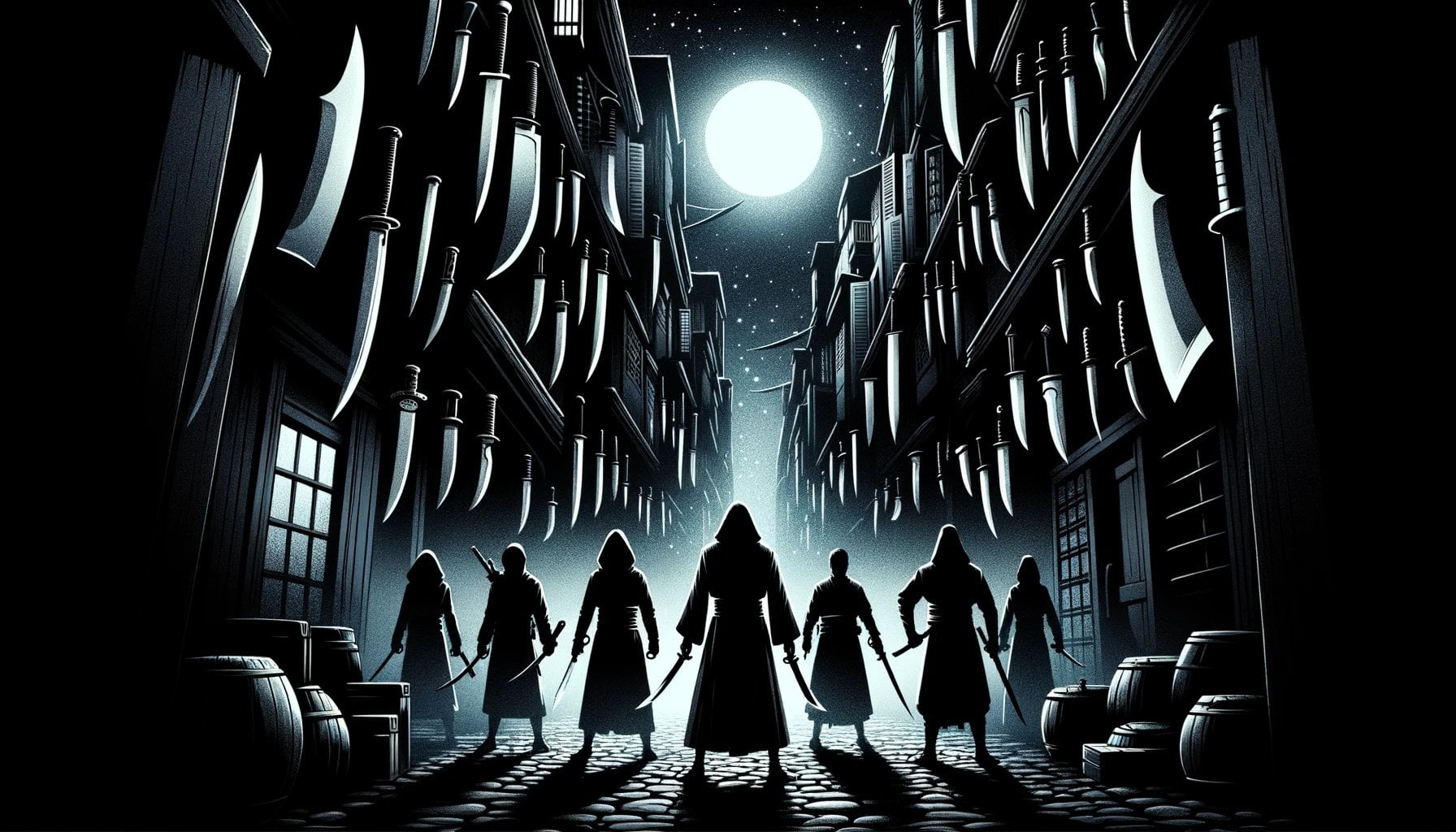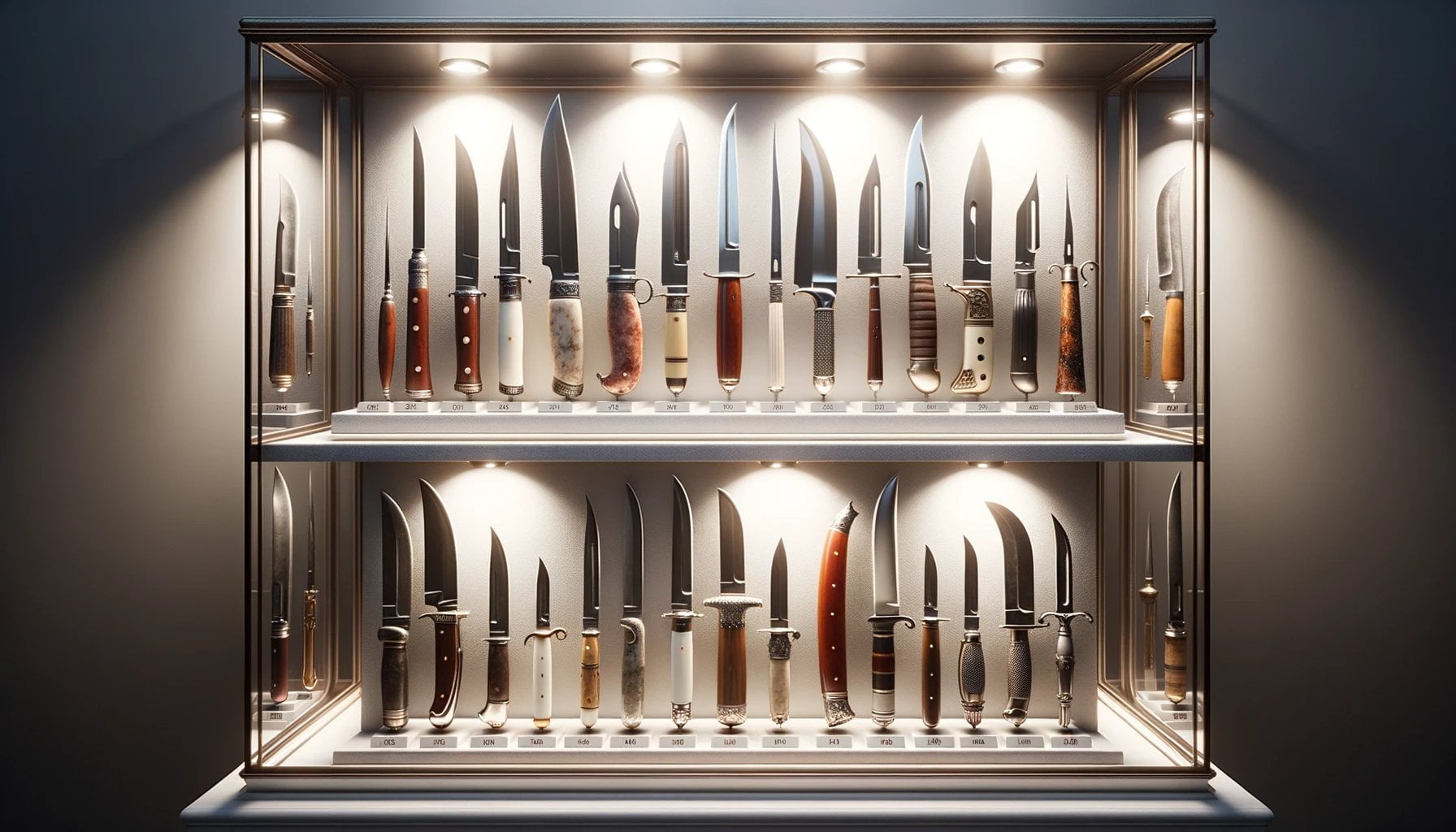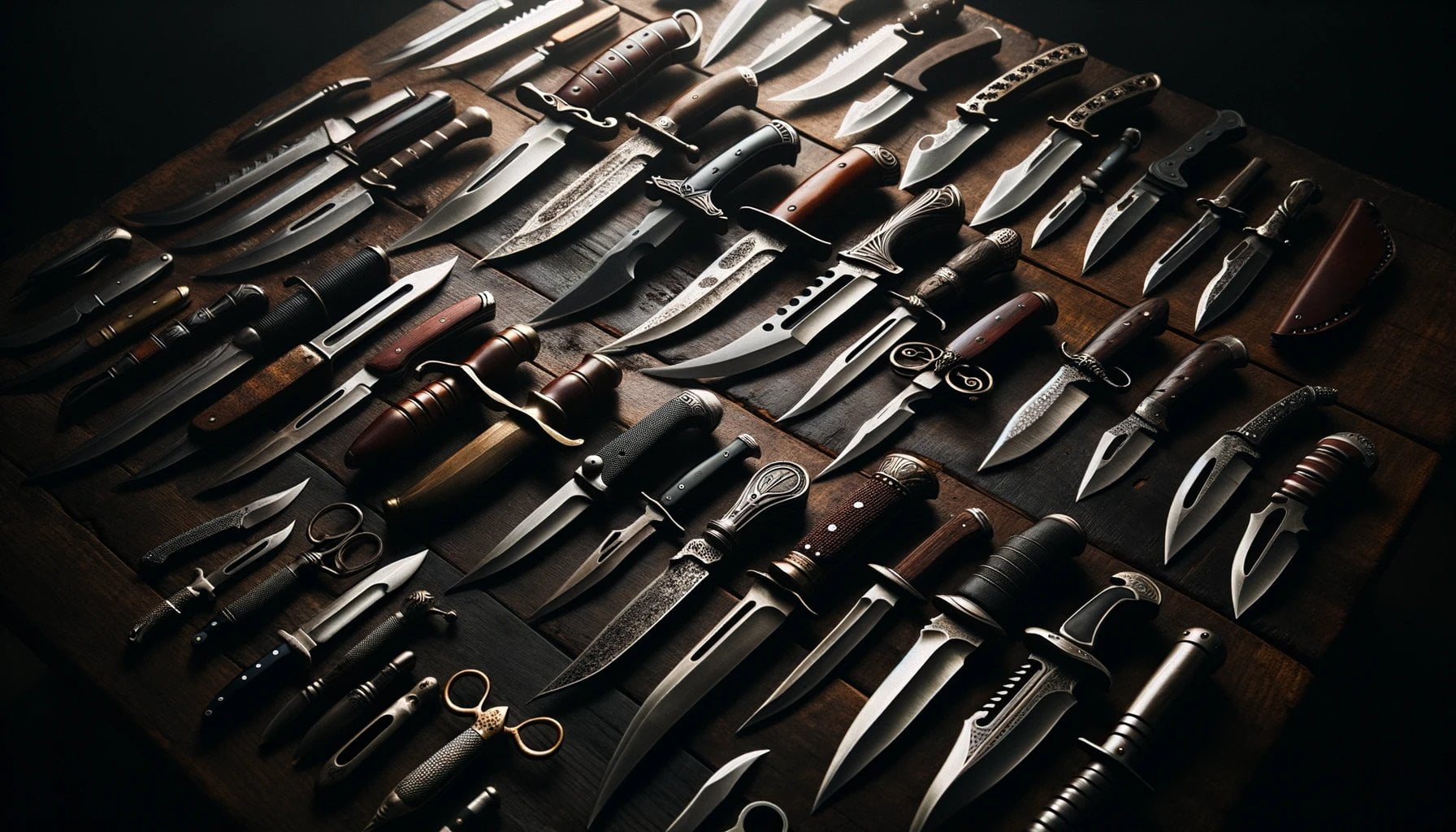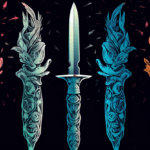Welcome to the fascinating world of assassins and their choice of weaponry. In this article, titled “Unveiling Assassin Secrets: Historical Knives Employed by Covert Operatives,” we will delve into the intriguing realm of assassination techniques throughout history, with a focus on the knives used by these skilled covert operatives. With an extensive knowledge of historical weaponry, I will guide you through the specific blades that played a crucial role in various assassination attempts across different eras. Get ready to uncover the secrets behind the deadly knives that shaped the course of history.

What knives did assassins use?
Throughout history, assassins have relied on a range of knives specifically designed to fulfill their deadly objectives. These blades were carefully crafted to be effective, silent, and concealable, ensuring the success of their covert operations. Let’s dive into the intriguing world of assassins and explore the historical knives they employed.
The Silent and Deadly Stiletto Knife
The stiletto knife holds a proud place in the arsenal of assassins. With its slender and needle-like blade, the stiletto offered several advantages. First and foremost, its silent nature made it the perfect choice for stealthy eliminations. The stiletto’s ease of concealment further enhanced its allure for covert operatives.
Moreover, the stiletto possessed a unique capability to penetrate heavy clothing effortlessly. This feature allowed assassins to inflict mortal wounds with less visible bleeding, ensuring minimal evidence at the scene. These characteristics made the stiletto a favored tool for assassins throughout history.
Throwing Knives: Striking from a Distance
Assassins often needed a means to eliminate or injure their targets from a distance without getting too close, and thus came the throwing knives. These specialized blades were designed to be balanced and aerodynamic, possessing the necessary weight and shape for accurate throwing.
During the Middle Ages, throwing knives were allowed to be used by assassins who had achieved a certain rank within their ranks. This meant that these lethal projectiles were reserved for the most skilled and experienced covert operatives.
Hidden Blades: Swift and Stealthy Eliminations
In the world of assassins, a swift and stealthy elimination holds great importance, and hidden blades were the perfect answer to this need. Concealed within bracers, walking canes, or even disguised as mundane objects, hidden blades allowed assassins to deliver quick and deadly strikes without raising suspicion.
The advantage of hidden blades lay in their ability to surprise the target, often catching them off guard and without the chance to defend themselves. These covert weapons were carefully designed to be easily drawn and retracted, striking fear into the hearts of those who found themselves facing an assassin.
Firearms: The Infamous Assassination Weapons
While knives undoubtedly played a major role in assassination attempts, firearms also secured their place in history as infamous assassination weapons. Weapons like the Carcano rifle and the pocket Derringer gained notoriety as the tools used in high-profile assassinations.
The use of firearms provided assassins with the advantage of long-range attacks, especially in circumstances where getting close to the target was difficult or heavily guarded.
In Conclusion
Assassins throughout history have employed a variety of knives tailored to suit their unique needs. From the silent and deadly stiletto to the precise throwing knives, and the swift and stealthy hidden blades, these blades helped covert operatives carry out their lethal missions. Firearms also had their place in the arsenal of assassins, enabling long-range attacks. The world of assassins and their choice of weaponry is as intriguing as it is dangerous, unveiling a glimpse into the dark side of history.
Ancient daggers were crafted with exceptional precision and adorned with intricate designs. Explore the rich history of these remarkable weapons at Ancient daggers. Unravel the mysteries surrounding their origins, cultural significance, and the legends that surround them. Prepare to be captivated by the fascinating tales that lie within their razor-sharp blades.
Specialized Assassin Blades of Medieval Times
Throughout history, assassins have utilized a wide range of weapons to carry out their deadly objectives. In medieval times, they relied on specialized assassin blades to ensure swift and stealthy eliminations while remaining undetected. These blades played a pivotal role in the covert operations of assassins, allowing them to strike with precision and lethality.
The Hidden Blade: A Covert Assasin’s Favorite
One of the most iconic and widely recognized weapons used by assassins in medieval times was the hidden blade. This concealed weapon was designed for close-proximity combat or self-defense, making it an ideal choice for stealthy eliminations. The hidden blade could be disguised within various objects, such as sleeves or bracers, enabling assassins to strike swiftly and without raising suspicion.
The concept of the hidden blade can be traced back to ancient times, finding its roots in the fifth century when one of the original assassins, named Darius, used it to kill King Xerxes I. In later medieval times, the hidden blade became a vital tool for assassins, allowing them to execute their targets with silent precision.
Stiletto Knives: Silent and Deadly
Another prominent blade associated with medieval assassins was the stiletto knife. Developed in Italy during the 15th century, stiletto knives became prominent weapons used by assassins in the 1950s and 1960s. Renowned for their slender and silent nature, stiletto knives were a favored choice for stealthy eliminations.
The long and narrow blade of the stiletto knife was specifically designed for thrusting attacks, capable of penetrating armor and finding weak points in an opponent’s defense. Its compact size and pointed tip made it ideal for close-quarters combat, allowing assassins to swiftly dispatch their targets without alerting others.
Other Assassin Blades of Medieval Times
In addition to the hidden blade and stiletto knife, medieval assassins employed a variety of other specialized blades to carry out their covert operations. Throwing knives, for instance, provided assassins with the ability to strike from a distance without getting too close. These blades were lightweight, small, and easily concealable, allowing assassins to maintain their anonymity while inflicting damage.
Assassins also utilized daggers, which were versatile weapons designed for close-proximity combat or self-defense. With their compact size and sharp blades, daggers were perfect for swift and deadly strikes. Their associations with historic weapon assemblages and historical context make them a significant part of the assassin’s arsenal.
In the world of assassins, the choice of weapon is crucial for success. Medieval assassins relied on specialized blades to carry out their covert operations, ensuring swift and stealthy eliminations. The hidden blade, stiletto knife, throwing knives, and daggers were among the weapons of choice for these covert operatives.
The historical context and associations of these blades with assassins further emphasizes their significance in the realm of covert operations. Understanding the specialized assassin blades of medieval times allows us to delve into a world of intrigue, shedding light on the dangerous profession of assassins and the lethal tools they utilized.
Innovations in Knife Technology During the Renaissance
Throughout history, knives have played a crucial role in various aspects of human life, from survival to warfare. The Renaissance period marked a time of significant advancements in technology, including the innovation of knife technology. In this article, we will delve into the fascinating world of knives during the Renaissance, exploring their innovations and the impact they had on covert operations and assassination attempts.
The Evolution of Knife Technology
To understand the innovations in knife technology during the Renaissance, we must first examine its historical development. Knives have been used as sharp-edged tools for millions of years, but it wasn’t until around 600 years ago that the invention of the folding knife revolutionized the way knives were designed and used. During the Renaissance, swords were the primary weapons used in warfare, comprising a hilt and blade. However, the advancements in mining, metallurgy, and blast furnace technology during this period led to significant innovations in knife craftsmanship as well.
Material Advancements
The Renaissance period witnessed remarkable advancements in metallurgy, leading to the widespread use of bronze and iron in knife production. These materials provided improved durability and strength compared to previous knife-making materials, such as stone or flint. The use of bronze and iron allowed for the creation of sharper and more resilient blades, making them more suitable for covert operations.
Innovative Designs
The Renaissance era brought forth several innovative designs in knife technology. One notable advancement was the creation of the notation knife, which originated in 16th century Italy. These knives featured musical scores carved on their blades, serving as a convenient tool for musicians and composers. Although not directly associated with assassination techniques, the notation knife showcases the creative and versatile nature of knife technology during this period.
Understanding Renaissance Science
To comprehend the influence of Renaissance science on knife technology, we need to explore the prevalent beliefs of the time. Medieval scientists during the Renaissance believed that matter was composed of the four elements: earth, air, fire, and water. While this may not seem directly related to knife technology, it showcases the prevailing mindset and contextual backdrop against which advancements in various fields, including weaponry, took place.
The Legacy of Renaissance Knives
Innovations in knife technology during the Renaissance have left a lasting impact on our understanding of historical weaponry. From the use of materials like bronze and iron to the development of creative designs like the notation knife, these advancements highlight the ingenuity and resourcefulness of artisans during this period.
Conclusion
As we have explored the innovations in knife technology during the Renaissance, we have gained insight into the historical context surrounding these advancements. From the use of advanced materials to the manifestation of creative designs, knives of this era not only served practical purposes but also played a significant role in the covert operations of assassins. By understanding the innovations in knife technology during the Renaissance, we gain a deeper appreciation for the intricate craftsmanship and the deadly yet fascinating world of historical weaponry.
Table: Innovations in Renaissance Knife Technology
| Innovation | Description |
|---|---|
| Use of bronze and iron | Improved durability and strength in knife blades |
| Notation knives | Musical scores carved on blades for musicians and composers |
| Advancements in metallurgy | Widespread use of bronze and iron in knife production |
| Influence of Renaissance science | Contextual backdrop for advancements in various fields |
Modern-day knives employed in assassination attempts
In the dark and secretive world of assassinations, knives have played a significant role throughout history. While modern assassinations often involve firearms, bombs, or poisons, there are still instances where knives are employed for their stealth, ease of concealment, and silent nature. In this article, we will explore the types of modern-day knives that have been associated with assassination attempts.
Stiletto Knives: Silent Eliminators
One of the most iconic knives used by assassins is the stiletto. Renowned for its slender and silently lethal nature, the stiletto knife is a favored choice for covert eliminations. Its design allows for easy concealment, making it an ideal weapon for assassins to blend into their surroundings without raising any suspicion. The stiletto’s sharp point and narrow blade enable it to penetrate heavy leather and find weak points in an opponent’s defense. With its stealthy characteristics, the stiletto has proven to be a preferred tool for discreet assassinations.
Throwing Knives: Striking from a Distance
Assassins in the Victorian era often utilized throwing knives due to their versatility and ability to strike from a distance, allowing for kills without getting too close to the target. These knives served not only as lethal weapons but also as distraction tools, diverting attention away from the assassin’s true intentions. British assassins in this era were skilled in the art of silent kills from afar, employing throwing knives with precision and accuracy.
Mechanical Assassination Weapons: Combination of Knife and Brass Knuckles
In certain cases, modern-day assassins have employed mechanical assassination weapons that combine the functionalities of a knife and brass knuckles. These weapons, usually concealed, serve to stun victims before delivering a fatal blow. By incorporating both elements of surprise and force, these weapons allow assassins to incapacitate their targets swiftly and effectively.
Shift in Weaponry: Guns, Bombs, and Poisons
As time has progressed and technology advanced, the preferred weapons of assassins have shifted. In modern times, assassinations often involve the use of guns, bombs, or poisons instead of knives. Handguns, rifles, and pocket Derringers have gained notoriety as weapons of choice for assassins. However, it is important to note that the use of knives still persists in certain circumstances where stealth and silence are paramount.
The Influence of Popular Culture: Assassins in Video Games
Popular culture, including video games, has also shaped the perception of knives employed by assassins. The modern Assassins depicted in the video game series Assassin’s Creed utilize kunai-like knives in their arsenal. Although fictional, these representations highlight the versatility and utility of knives, even in a contemporary setting.
While the historical significance of knives in assassination attempts cannot be denied, it is essential to acknowledge that modern methods have evolved. Studies on assassination attempts in the US, for example, reveal that handguns are the most commonly used weapons. Furthermore, intelligence agencies such as the CIA have developed undetectable weapons like the hidden heart attack gun.
In conclusion, while knives have played a crucial role in the world of assassins throughout history, the prevalence of modern-day assassination attempts involving knives has decreased. However, the silent and stealthy nature of knives remains intriguing, and their historical significance cannot be overlooked. Understanding the types of knives employed by assassins allows us to delve into the captivating world of covert operations, shedding light on their choice of weaponry and the evolution of modern-day assassination techniques.
Table: Modern-Day Knives Employed in Assassination Attempts
| Knife Type | Characteristics |
|---|---|
| Stiletto | Slender, silent, penetrates heavy leather |
| Throwing | Versatile, strikes from a distance |
| Mechanical | Combines knife and brass knuckles for stunning |
| Guns | Handguns, rifles, and pocket Derringers |
| Bombs | Explosives for lethal impact |
| Poisons | Chemical substances for silent and covert assassinations |
Through an exploration of these modern-day knives, we can gain a more comprehensive understanding of the tools and techniques employed by assassins in different eras, further fueling our fascination with the intriguing world of covert operations.

FAQ
Q1: What are some characteristics of the stiletto knife preferred by assassins?
A1: Assassins favored the stiletto knife for its silent nature, ease of concealment, and its ability to easily penetrate heavy clothing, inflicting mortal wounds that bled less.
Q2: How were throwing knives utilized by assassins?
A2: Assassins used throwing knives as a method to injure or eliminate enemies from a distance. During the Middle Ages, throwing knives were permitted to be used by assassins upon reaching a certain rank.
Q3: Did assassins often use hidden blades for their operations?
A3: Yes, assassins frequently employed hidden blades for quick and stealthy eliminations. These blades allowed for concealed and discreet attacks.
Q4: Were firearms ever used as assassination weapons?
A4: Yes, firearms such as the Carcano rifle and pocket Derringer have gained infamy as assassination weapons. They provided assassins with a means to carry out their covert operations from a distance.
Q5: What other weapons were used by assassins throughout history?
A5: In addition to knives and firearms, assassins in medieval times used a variety of weapons, including swords, lances, spears, axes, maces, crossbows, longbows, and daggers. These weapons served different purposes and were utilized based on the specific needs of the assassins’ missions.
















